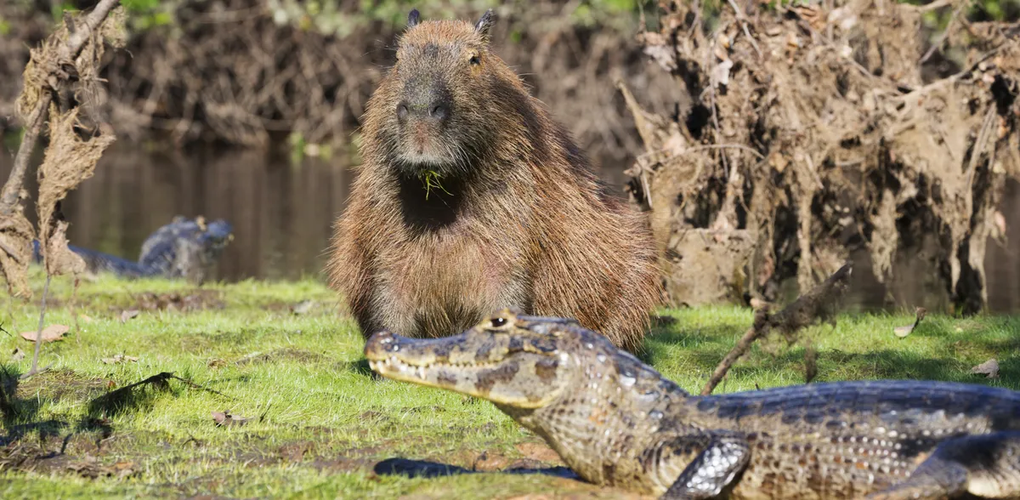The capybara, the largest rodent on the planet, has long been known for its docile temperament and ability to coexist peacefully with most of South America's most fearsome predators, including crocodiles.
Images of capybaras sunning themselves next to alligators, or allowing birds, turtles and other creatures to climb on them, have become iconic on social media. So why do alligators rarely attack capybaras?
In the wild, capybaras often live in watery areas such as lakes, swamps and rivers, which are habitats for dangerous crocodiles.
According to researchers, this phenomenon stems from the biological and behavioral characteristics of both species.

Capybaras and caimans in the wild (Photo: Shutterstock).
Despite its docile appearance, capybaras possess large, sharp incisors powerful enough to inflict serious injury.
Their relatively large adult body size, weighing from 30-70kg, along with their ability to run fast and swim well, makes them difficult prey to approach.
Dr. Elizabeth Congdon, a capybara researcher at Bethune Cookman University, said it is very rare for a crocodile to actively attack this rodent in the wild.
Crocodiles always prioritize easier food sources such as fish, birds or small animals.
As such, an adult capybara is not an optimal choice in terms of both energy and risk. The few attacks that have been reported have mostly been on juvenile capybaras, which are the target of many predators.
In particular, with its peaceful personality, little conflict and no territorial competition, capybara becomes an interesting symbol in the ecosystem, as a welcome animal in most places where they appear.
According to Dr. Congdon, as long as capybaras have enough grass to eat and water to cool off, they can live peacefully with almost any species.
However, there have been some documented cases of them attacking pets or humans when teased or threatened. Capybara bites can be dangerous, a reminder that they are still wild animals with strong instincts for self-defense.
The phenomenon of this animal "living with crocodiles" shows that natural ecosystems always operate according to their own rules, sometimes contrary to conventional thinking about the relationship between hunters and prey.
